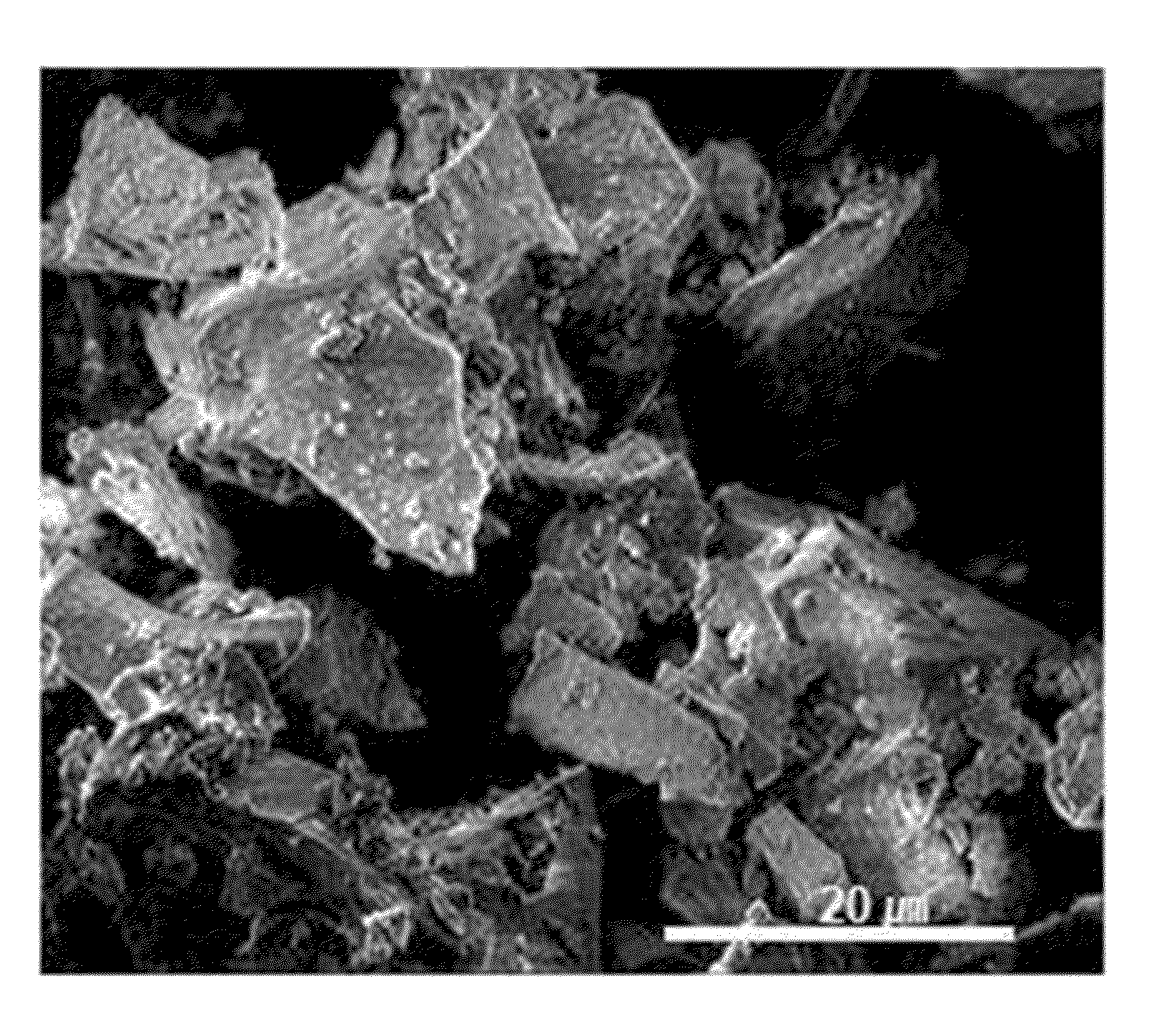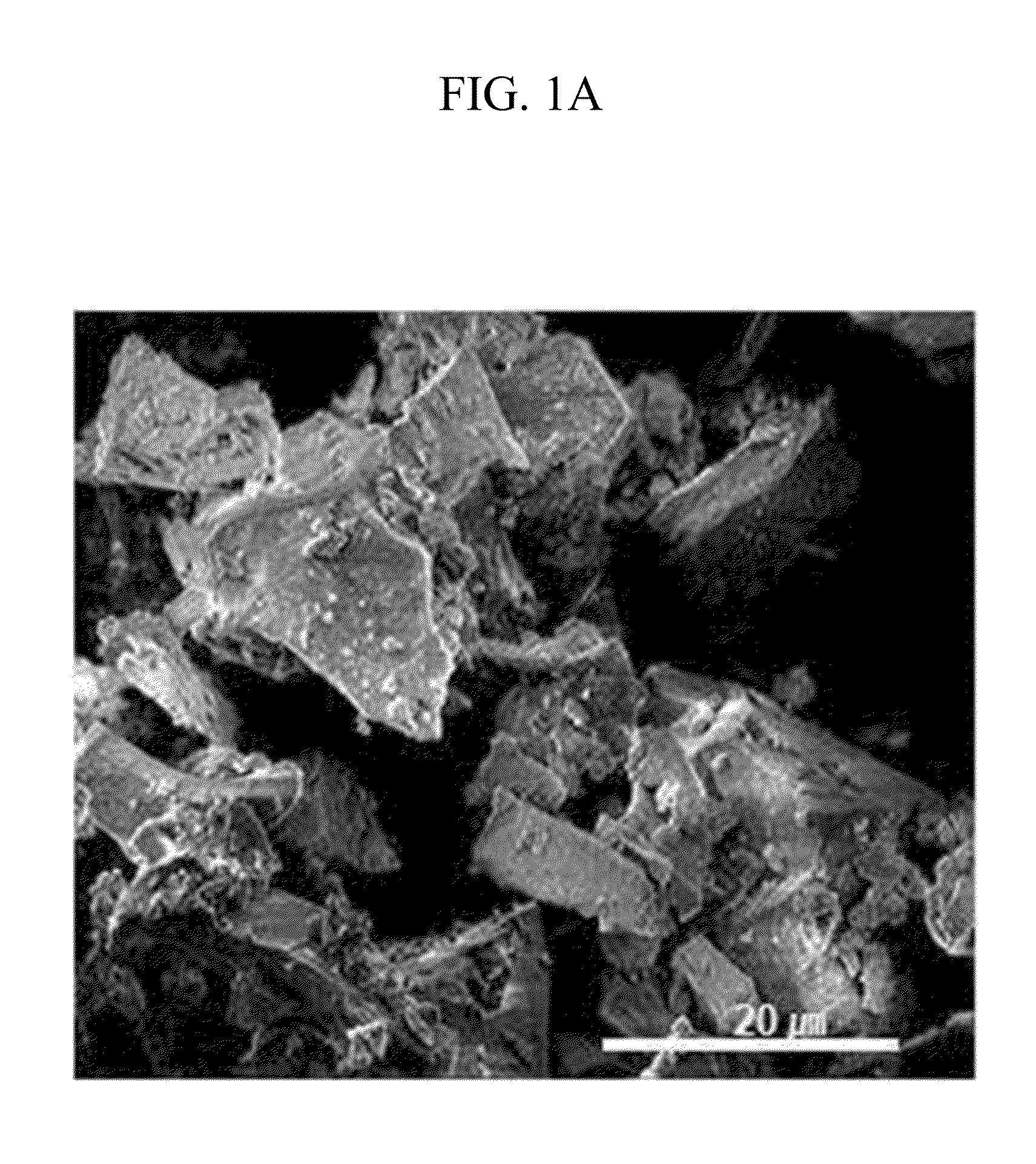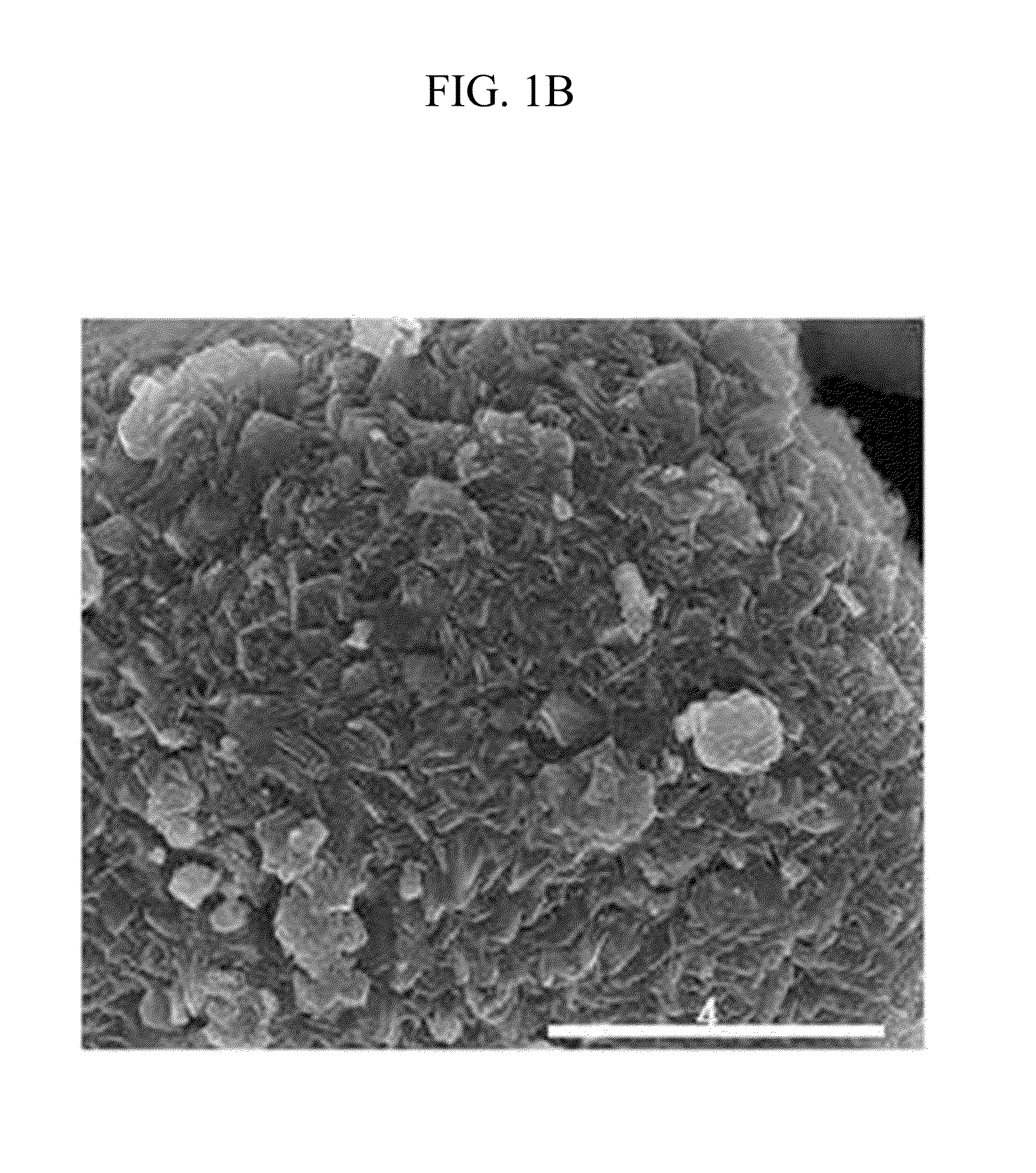Positive active material for rechargeable lithium battery and rechargeable lithium battery including same
a technology of positive active materials and rechargeable lithium batteries, which is applied in the direction of non-aqueous electrolyte accumulator electrodes, cell components, electrical apparatuses, etc., can solve the problems of reducing affecting the cycle life of the battery, and causing the breakage of positive active material particles, so as to reduce the irreversible capacity and increase the charge capacity of the battery. , the effect of improving the cycle li
- Summary
- Abstract
- Description
- Claims
- Application Information
AI Technical Summary
Benefits of technology
Problems solved by technology
Method used
Image
Examples
example 1
[0109]Li2CO3 with purity of 99.9% was fired for thermal decomposition at 700° C. under an oxygen atmosphere, preparing Li2O with purity of 99.9%. 16 g of Li2O was uniformly mixed with 11 g of CoO (average particle diameter: 10 μm) with an automatic mixer. This mixture was fired at 700° C. under a pure N2 atmosphere for 12 hours, preparing Li6CoO4 with purity of 99% (average particle diameter: about 20 μm).
[0110]The Li6CoO4 was mixed with LiCoO2 having an average particle diameter of 10 μm in a weight ratio of 5:95, preparing a positive active material.
[0111]On the other hand, a polyvinylidene fluoride binder was dissolved in a N-methyl-2-pyrrolidone solvent. The positive active material and a carbon black conductive material were added to the solution, preparing a positive active material slurry. Herein, the positive active material, the conductive material, and the binder were mixed in a weight ratio of 80:10:10. The slurry was coated on an Al foil and dried at 130° C. for 20 minut...
example 2
[0114]Li2CO3 with purity of 99.9% was fired for thermal decomposition at 700° C. under an oxygen atmosphere, preparing Li2O with purity of 99.9%. 16 g of the Li2O was uniformly mixed with 11 g of CoO (average particle diameter of 10 μm) using an automatic mixer. This mixture was fired at 700° C. under a pure N2 atmosphere for 12 hours, preparing Li6CoO4 (average particle diameter: about 20 μm) with purity of 99%.
[0115]The Li6CoO4 was mixed with LiCoO2 having an average particle diameter of 10 μm in a weight ratio of 10:90, preparing a positive active material.
[0116]The positive active material and a carbon black conductive material were added to a solution prepared by dissolving a polyvinylidene fluoride binder in an N-methyl-2-pyrrolidone solvent, preparing a positive active material slurry. Herein, the positive active material, the conductive material, and the binder were mixed in a weight ratio of 80:10:10. The slurry was coated on an Al foil and dried at 130° C. for 20 minutes, ...
example 3
[0119]Li2CO3 with purity of 99.9% was fired for thermal decomposition at 700° C. under an oxygen atmosphere, preparing Li2O with purity of 99.9%. 16 g of the Li2O was uniformly mixed with 11 g of CoO (average particle diameter of 10 μm) with an automatic mixer. This mixture was fired at 700° C. under a pure N2 atmosphere for 12 hours, preparing Li6CoO4 with purity of 99% (average particle diameter: about 20 μm).
[0120]The Li6CoO4 was mixed with LiCoO2 having an average particle diameter of 10 μm in a weight ratio of 15:85, preparing a positive active material.
[0121]The positive active material and a carbon black conductive material were added to a solution prepared by dissolving a polyvinylidene fluoride binder in an N-methyl-2-pyrrolidone solvent, preparing a positive active material slurry. Herein, the positive active material, the conductive material, and the binder were mixed in a weight ratio of 80:10:10. The slurry was coated on an Al foil and dried at 130° C. for 20 minutes, f...
PUM
| Property | Measurement | Unit |
|---|---|---|
| average particle diameter | aaaaa | aaaaa |
| temperature | aaaaa | aaaaa |
| temperature | aaaaa | aaaaa |
Abstract
Description
Claims
Application Information
 Login to View More
Login to View More - R&D
- Intellectual Property
- Life Sciences
- Materials
- Tech Scout
- Unparalleled Data Quality
- Higher Quality Content
- 60% Fewer Hallucinations
Browse by: Latest US Patents, China's latest patents, Technical Efficacy Thesaurus, Application Domain, Technology Topic, Popular Technical Reports.
© 2025 PatSnap. All rights reserved.Legal|Privacy policy|Modern Slavery Act Transparency Statement|Sitemap|About US| Contact US: help@patsnap.com



